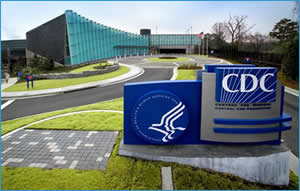Updated January 26, 2020
CDC is closely monitoring an outbreak of respiratory illness caused by a novel (new) coronavirus (termed “2019-nCoV”) that was first detected in Wuhan City, Hubei Province, China and which continues to expand. Chinese health officials have reported more than a thousand infections with 2019-nCoV in China, including outside of Hubei Province. Infections with 2019-nCoV also are being reported in a growing number of international locations, including the United States, where 5 cases in travelers from Wuhan have been confirmed in four states (AZ, CA, IL, WA) as of January 26, 2020.
Source and Spread of the Virus
Chinese health authorities were the first to post the full genome of the 2019-nCoV in GenBankexternal icon, the NIH genetic sequence database, and in the Global Initiative on Sharing All Influenza Data (GISAIDexternal icon) portal, an action which has facilitated detection of this virus. On January 24, 2020, CDC posted in GenBank the full genome of the 2019-nCoV virus detected in the first U.S. patient from Washington state. The virus genetic sequence from the patient in Washington is nearly identical to the sequences posted from China. The available sequences suggest a likely single, recent emergence from a virus related to bat coronaviruses and the SARS coronavirus. The available sequence information does not provide any information about severity of associated illness or transmissibility of the virus.
Early on, many of the patients in the outbreak in Wuhan, China reportedly had some link to a large seafood and animal market, suggesting animal-to-person spread. However, a growing number of patients reportedly have not had exposure to animal markets, and there is evidence that person-to-person spread is occurring. At this time, it’s unclear how easily or sustainably this virus is spreading between people. Learn what is known about the spread of newly emerged coronaviruses.
Illness Severity
Both MERS and SARS have been known to cause severe illness in people. The complete clinical picture with regard to 2019-nCoV is still not fully clear. Reported illnesses have ranged from infected people with little to no symptoms to people being severely ill and dying. Learn more about the symptoms associated with 2019-nCoV.
There are ongoing investigations to learn more. This is a rapidly evolving situation and information will be updated as it becomes available.










